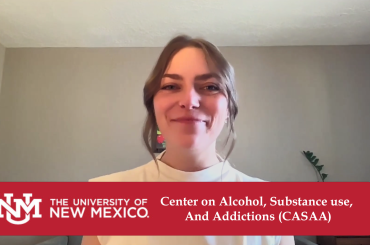More research is needed before we can fully understand the short-term and long-term impacts of pornography on those who view it. But what we do know for certain: today’s digital pornography is without question a super-stimulant. What I mean by super-stimulant is that digital pornography is not a naturally occurring phenomenon. Its ability to stimulate us is beyond the norm. In other words, digital pornography is man-made, and it brings more intensity than what nature typically provides.
Sugar Cane and Coca Leaves
For an easily understandable example, consider sugar cane. Sugar cane occurs in nature, and when we chew it, we can get a mild sugar rush. But we’re not likely to become addicted. The highly refined white sugar we find on our grocery shelves, however, is another story. That ‘man-made’ sugar is highly stimulating and highly addictive. For a similar example, consider coca leaves. Workers in the mountains of Brazil chew these leaves as a mild stimulant while they labor. When these leaves are refined into cocaine, this mild stimulant becomes a highly addictive, man-made super-stimulant.
A Form of Emotional Escape
When we view porn as a super-stimulant, the same as cocaine and similarly intense substance, we see that porn can be used the same way certain drugs are used – as a form of emotional numbing and escape. I discussed this idea in a previous article on this site titled Can Porn Serve as a Gateway Drug. In that article, based on existing research, I concluded,
“For the most part, individuals who are vulnerable to addictions and other psychological issues, usually thanks to genetics coupled with a family history of abuse and neglect (alcoholism, violence, mental health problems in caregivers, etc.), are absolutely at risk for sex and intimacy issues, just as they are at risk for alcohol and drug-related problems.”
In future posts, I will discuss how seeking emotional escape via the intensely dissociative and powerful abuse of experiences and/or substances, rather than seeking the comfort that healthy relationships can offer, is at the core of almost all compulsive and addictive behaviors. For now, however, I will simply state that individuals seeking temporary emotional escape by creating a neurochemical rush can easily find that rush. And they can find it with or without an actual stimulant drug. That’s because certain behaviors, porn in particular, create the same reaction.
A Free and Endless Supply
Over time, porn may be even more effective as a super-stimulant than cocaine or meth. The supply and variety of porn are pretty much endless. Plus, users can view and experience the intensity of porn for as long as they want without running out of money (because the vast majority of porn is free), and without being found out or chastised (because porn use is easy to hide). Stimulant drug users, on the other hand, can only sneak and hide their activity for so long. Eventually, the cracks start to show financially, legally, emotionally, and physically. Porn users, even extremely heavy porn users, can conceal their behavior indefinitely if they so choose. But there is a cost nonetheless – isolation, shame, depression, anxiety, etc.
Tolerance and Escalation
Two hallmarks of all super-stimulants (both substances and behaviors) are the related phenomena of tolerance and escalation. Tolerance occurs when a drug or behavior starts to lose its neurochemical impact. The brain adjusts to the super-stimulus by ‘turning down the volume,’ so to speak. Escalation occurs when users recognize the effects of tolerance and respond using more of or more intense versions of a drug or behavior so they can once again achieve the high they seek.
With substances, tolerance and escalation are relatively easy to identify and understand. For example, the first time a person uses an intoxicant, very little is needed. A few beers will get the person high. Then, as their drinking continues over time, they may need a six-pack to achieve the same effect. Eventually, down the line, they may switch to hard alcohol or illicit drugs because beer just doesn’t get them where they want to go. Then one day, they find themselves in a dark alley with a needle in their arm and no idea how they got there.
Tolerance/escalation with pornography can be equally dramatic, though it’s usually not as obvious to either the user or those who love and care about the user. Typically, early porn use tends to be relatively vanilla. That’s more than enough to generate the intensity and arousal desired by the user. Eventually, though, tolerance kicks in, and the user needs both more porn and more intense versions of porn. Then one day the porn user realizes that he or she is using imagery that violates personal values and might have even seemed disgusting back when he or she first experienced pornography.
The Brain at Work
As stated above, tolerance and escalation occur because the human brain adapts to the inputs it receives. If we continuously expose ourselves to behaviors that consistently create the release of excessive levels of dopamine and adrenaline, as occurs with super-stimulants like pornography, our brains adjust. The brain produces less of these substances and reduces the number of neurons than can receive these substances. Thus, users of super-stimulants must, over time, use more of, or more intense versions of, their drug or behavior to achieve the desired neurochemical intensity and excitement.
Upping the Intensity
Some users of super-stimulants up the intensity of their experience by stacking one super-stimulant drug or behavior on top of another. For instance, heavy porn users may start using meth or cocaine while they look at porn or sexually interact via webcam, sexts, dating/hookup apps, and other forms of digitized sexuality. Intensity can also be increased by heightening risk, increasing the sense of taboo, and pushing personal boundaries. All of these behaviors can lead to problems for users of pornography.
The most common method of upping the intensity with pornography, however, involves what clinicians and neurobiologists call novelty. With pornography, that means continually finding new imagery and new experiences. In fact, almost any porn user can tell you that the first time they see an image or video is the best time. This is both in terms of physical sexual arousal and the dopamine-adrenaline rush that the imagery creates. The first viewing is the most intense viewing. With each subsequent viewing, the super-stimulant loses a bit of power.
This means that porn users are continually looking for the next high intensity hit. And the porn universe provides. As I have written previously, in today’s world, the supply and diversity of readily available, easily and anonymously accessed pornography is incalculable. The porn universe is just plain too big and too diverse to measure. It’s growing every single minute of every single day.
Not a Problem for Everyone, but a Struggle for Some
None of this, of course, means that every person who uses porn will experience problems related to that use. In fact, most do not, just as most people who use alcohol don’t experience problems. However, because of the super-stimulant nature of pornography, some people will inevitably struggle with it. Some may find themselves violating their moral, ethical, or religious values. They may struggle with real-world sex and romance related to their use of pornography. They may become compulsive or addicted, with all of the usual consequences associated with compulsivity and addictions.
Plenty of people use porn for sexual education and sexual pleasure, and they never experience any issues related to this. If they hear a sexual term and they’re not sure what it means, they Google it and watch a video. Maybe it turns them on, maybe it doesn’t. If they’re not in a relationship and they need a sexual outlet, they may turn to porn. But as soon as they start dating, they put the porn away and focus on the real person and real connection in front of them. Others, however, as we see with all super-stimulants, will eventually experience any of a wide variety of common problems related to the heavy use of pornography.
If you or someone you care about is experiencing porn-related problems, free resources can be found on SexandRelationshipHealing.com, and professional help can be found at the Seeking Integrity treatment center in Los Angeles.







